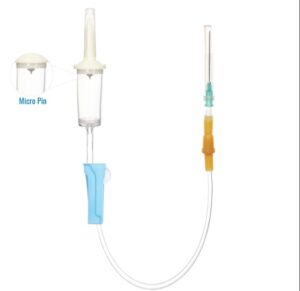Understanding IV Cannulas: A Comprehensive Guide

Introduction
In the world of modern medicine, the IV cannula plays a crucial role in patient care, ensuring efficient delivery of fluids, medications, and nutrients directly into the bloodstream. At SPM Medicare, we understand the importance of high-quality medical supplies, and IV cannulas are no exception. This article will explore what an IV cannula is, its types, uses, insertion techniques, and care practices, providing you with a complete understanding of this vital medical device.
What is an IV Cannula?
An IV cannula, or intravenous cannula, is a thin, flexible tube inserted into a vein to administer medications, fluids, or blood products. It serves as a conduit, allowing healthcare professionals to provide necessary treatments quickly and efficiently. Cannulas are commonly used in hospitals, clinics, and emergency care settings.
Types of IV Cannulas
IV cannulas come in various types, each designed for specific purposes:
- Peripheral IV Cannula: This is the most common type used for short-term therapy. It is inserted into a peripheral vein, usually in the arm or hand, and is suitable for fluid replacement and medication administration.
- Central Venous Catheter (CVC): CVCs are used for long-term treatment and are inserted into larger veins, such as the jugular or subclavian vein. They are often utilized for chemotherapy, long-term antibiotics, or total parenteral nutrition (TPN).
- Midline Catheter: Midline catheters are longer than peripheral IV cannulas but shorter than central lines. They are inserted into a peripheral vein and are used for therapies lasting between 1 to 4 weeks.
- Peripherally Inserted Central Catheter (PICC): A PICC line is a type of central venous catheter inserted into a peripheral vein and threaded into a central vein. It is ideal for patients requiring long-term intravenous therapy.
- Intraosseous (IO) Cannula: In emergency situations where intravenous access is difficult, an IO cannula is inserted into the bone marrow to deliver fluids and medications directly into the bloodstream.
Indications for IV Cannula Use
The use of IV cannulas is indicated in various medical scenarios, including:
- Fluid Replacement: IV cannulas are used to administer fluids to patients who are dehydrated or need hydration after surgery.
- Medication Administration: Many medications, including antibiotics, analgesics, and chemotherapy agents, are given via IV to ensure rapid onset of action.
- Blood Transfusions: IV cannulas facilitate the safe and efficient transfusion of blood and blood products.
- Nutritional Support: For patients unable to eat, IV cannulas allow the delivery of total parenteral nutrition (TPN).
- Diagnostic Procedures: Some diagnostic tests require intravenous access for contrast media injection.
Insertion Techniques for IV Cannulas
Inserting an IV cannula is a skill that requires training and practice. Here are the steps involved:
- Preparation: Gather all necessary equipment, including the IV cannula, antiseptic wipes, tourniquet, and dressing. Explain the procedure to the patient to ensure cooperation.
- Site Selection: Choose an appropriate vein, typically in the arm or hand, where the vein is visible and palpable. Avoid areas with previous injuries or infection.
- Cleansing: Use antiseptic wipes to clean the selected insertion site thoroughly, reducing the risk of infection.
- Venipuncture: Apply a tourniquet to distend the vein, then use a needle to puncture the vein. Once blood returns in the flashback chamber, insert the cannula gently into the vein.
- Secure the Cannula: Once the cannula is in place, remove the needle and secure the cannula with adhesive tape or a dressing to prevent dislodgment.
- Flushing: Flush the cannula with saline to ensure patency and to confirm proper placement.
Care and Maintenance of IV Cannulas
Proper care and maintenance of IV cannulas are crucial to prevent complications such as infection or thrombosis. Here are some essential care practices:
- Regular Assessment: Frequently assess the IV site for signs of redness, swelling, or tenderness. Notify the healthcare provider if any concerns arise.
- Flushing Protocols: Follow facility protocols for flushing the cannula with saline to maintain patency and prevent clot formation.
- Change Dressings: Change the dressing over the IV site as per hospital policy or if it becomes soiled or wet.
- Monitor Flow Rates: Ensure that the flow rates of infusions are as prescribed and adjust as necessary.
- Educate Patients: Inform patients about signs of complications, such as pain or swelling at the insertion site, and encourage them to report any concerns promptly.
Conclusion
IV cannulas are vital medical devices that enhance patient care by facilitating efficient medication and fluid delivery. At SPM Medicare, we are committed to providing high-quality medical supplies, including various types of IV cannulas, to meet the needs of healthcare providers and patients alike. By understanding the uses, types, and care practices associated with Intravenous cannula, you can ensure optimal patient outcomes and safety in your medical practice.
If you’re interested in learning more about IV cannulas or exploring our extensive range of medical supplies, visit our website at SPM Medicare today!










